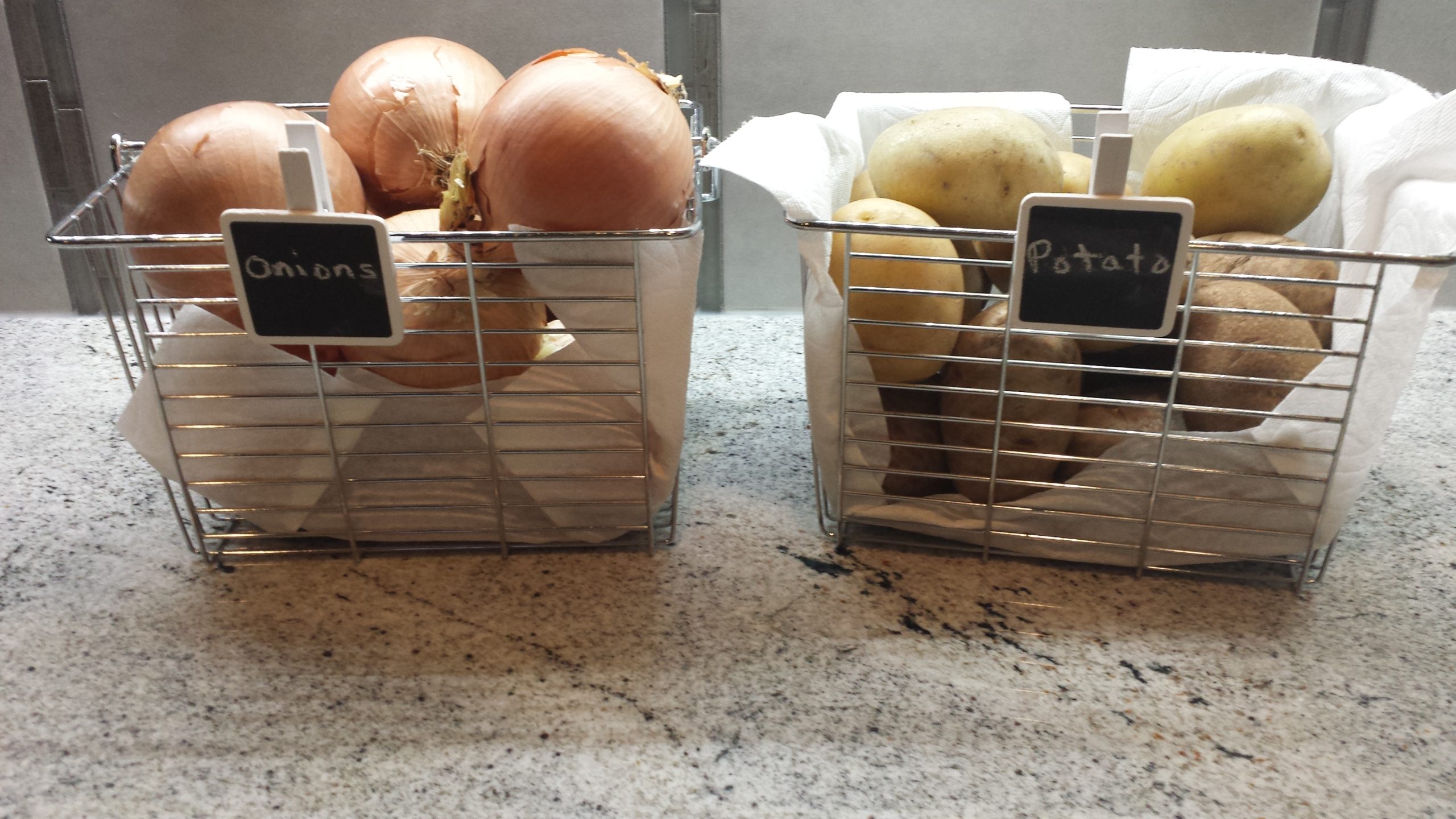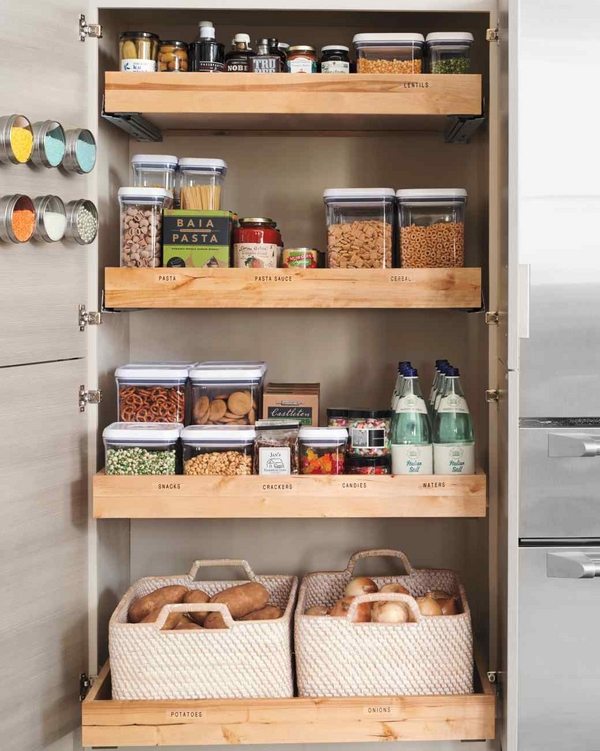

Pantry perfection is achievable with a few smart strategies! A well-organized pantry isn’t just aesthetically pleasing; it dramatically improves your kitchen workflow, reduces food waste, and saves you time. Many people struggle with cluttered pantries, leading to a frustrating shopping experience and difficulties in finding ingredients. This article will delve into various smart storage solutions, addressing common pantry organization challenges, and empowering you to achieve pantry perfection. We’ll cover everything from decluttering and container selection to maximizing vertical space and labeling techniques. Let’s dive in!
Decluttering: The Foundation of Pantry Perfection
Assessing Your Current Inventory
Before implementing any storage solutions, a thorough decluttering session is essential. Start by emptying your entire pantry. Examine each item carefully, noting the expiration dates, and your personal consumption habits. Be honest with yourself about the items you rarely or never use. This critical step helps you determine what to keep, discard, or donate. Removing items like expired goods or duplicates significantly reduces clutter, creating more room for essentials.
Identifying and Removing Excess Items
This is often the most challenging but rewarding part. Consider creating three piles: keep, donate, and discard. The “keep” pile includes items you use regularly and have an appropriate storage place. The “donate” pile comprises usable items but ones that you may not use frequently or are in good condition. The “discard” pile contains expired, damaged, or unwanted food items. By separating items into these categories, you create a clear vision for your pantry’s new layout and optimize storage solutions.
Implementing a Consistent System
A key principle in any decluttering process is to establish a consistent method to prevent future clutter. This approach involves regularly reviewing your pantry stock, identifying outdated items or duplicate items, and donating any food that may be expired or nearing its use-by date. A well-defined system not only eliminates clutter but creates a more sustainable approach to food management.
Container Selection: Choosing the Right Tools for the Job
Maximizing Space with Versatile Containers
The right storage containers can transform your pantry. Choose containers that fit different sizes and shapes of items, maximizing space. Consider clear containers for easy identification, and airtight containers to maintain food freshness. Investing in stackable containers allows for vertical space utilization, reducing clutter while maintaining a tidy appearance.
Prioritizing Airtight and Food-Safe Options
Protecting food from air, moisture, and pests is paramount for maintaining freshness. Choose containers made from food-grade materials that ensure no harmful chemicals leach into your food. Airtight containers are crucial, especially for dry goods. This helps you maintain the quality of your stored items.
Utilizing Different Sizes and Materials
For different food types, utilize different container sizes. Small containers for spices, large containers for grains. This ensures you don’t waste space and allows for easy access to each food item.
Maximizing Vertical Space
Implementing Stackable Solutions
Efficiently utilizing vertical space is crucial in small kitchens. Stackable containers are a game-changer, optimizing storage while keeping your pantry tidy. They allow you to create multiple tiers and maximize the use of every inch of your pantry space. This strategy eliminates the need for sprawling horizontal storage and maximizes your pantry’s capacity.
Utilizing Shelf Dividers for Organization
Shelf dividers offer several benefits for the purpose of organization. They create clear compartments, making it easier to locate specific items. Shelf dividers also prevent items from shifting around, keeping your pantry organized and preventing spills. When using these, ensure there’s enough space between dividers for easy access. This ensures you can easily reach and access items and maintain a sense of order.
Exploring Creative Solutions for Tall Pantry Items
For taller items like canned goods or jars, consider using clear, tall containers or shelves with adjustable shelves. This allows items to be organized neatly and visible within your pantry. For example, you could utilize shelf dividers and clear containers of varying sizes to maximize vertical space and enhance organization.
Labeling and Categorizing for Easy Access
Developing a Consistent Labeling System
Creating a consistent labeling system is key to achieving pantry perfection. A well-structured system will help you identify the contents of your containers quickly. Use labels to indicate the date you purchased the item, for expiration purposes. Choose clear labels with waterproof ink. Make it a habit to include expiration dates to keep track of when items need to be used or replaced. Properly labeling containers reduces the time spent searching for specific ingredients.
Arranging Items Logically for Maximum Efficiency
Categorizing items logically ensures easy retrieval and efficient workflows. Place similar items together for convenience. Organize items by type (e.g., grains, pasta, canned goods) and by frequency of use. High-use items should be placed at easily accessible levels. This simple step dramatically impacts your cooking and grocery shopping experience.
Maintaining the System for Long-Term Success
Consistency is key to maintaining your well-organized pantry. Regularly review your pantry contents, declutter, and update your labels. This approach helps to prevent clutter from accumulating and keeps the pantry functioning at its best. A regularly maintained system ensures the storage solutions function efficiently and effectively, promoting overall kitchen productivity.
Additional Tips and Tricks for Pantry Perfection
Optimizing Storage for Different Items
Consider how you store different food types, taking into account their specific needs. For example, store dry goods like pasta and rice in airtight containers to maintain their freshness. Use clear containers for canned goods to easily identify the contents. Optimize space by utilizing vertical storage and shelf dividers.
Implementing a First-In, First-Out (FIFO) System
Adopting a FIFO system is beneficial for preventing food waste. This system ensures that you utilize older items before newer ones. It’s a simple yet effective strategy for maximizing freshness and reducing waste. This method also allows you to keep track of what you’re consuming, promoting better inventory management and reduces the risk of food expiring before use.
Review and Adjust as Needed
Your pantry organization system should evolve to meet your needs and habits. Review your system regularly and make adjustments as necessary. As your lifestyle or culinary preferences evolve, it’s necessary to adapt and maintain a sustainable approach to pantry organization. This will help you maintain the system for the long haul.
FAQ:
What are some common pantry organization mistakes to avoid?
Many people make common mistakes when organizing their pantry, leading to wasted space and difficulty finding items. Some common errors include not properly labeling containers, overcrowding shelves, and not utilizing vertical space efficiently. Ignoring these aspects can quickly turn your pantry into a cluttered mess rather than a functional storage space. By being mindful of these points, you can avoid these issues and create a more organized and accessible pantry.
How do I determine what to keep, and what to discard from my pantry?
To determine what to keep and discard from your pantry, take stock of your current inventory. Identify items you’ve never used, expired items, or duplicates. Be honest with yourself about your food consumption habits and how frequently you utilize certain items. This process also allows you to evaluate your pantry space and assess if specific storage solutions are worth the investment. Make a conscious decision on which items you want to retain to fit your lifestyle. Disposing of unnecessary items will free up space and reduce potential food waste.
In conclusion, achieving pantry perfection is a journey, not a destination. By implementing these smart storage solutions, you’ll not only maximize your pantry space but also streamline your grocery shopping and cooking processes. Remember to tailor these ideas to your specific needs and preferences for optimal results. Start decluttering your pantry today and experience the freedom of a well-organized kitchen, leading to happier meals and more efficient cooking. Visit our website for more helpful tips and tricks!